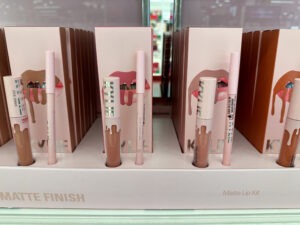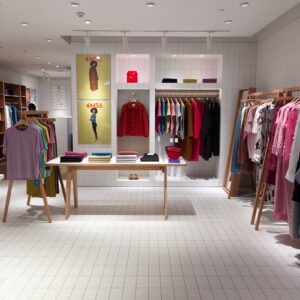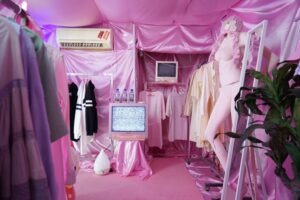The Pop-Up Phenomenon: Pros And Cons
Published on November 3, 2023, 11:09 a.m.
by Chloe Petro.
A pop-up shop is defined as “a store that ‘pops-up’ for a limited period of time to achieve a particular goal.” This marketing strategy with a relationship-building component offers a unique opportunity for both the consumer and brand to get to know each other better through an oftentimes immersive and in-person experience. But, the up-and-coming trend has both pros and cons.
Successful pop-ups
The first pop-up shop I remember is Kylie Cosmetics. This iconic makeup brand, founded by none other than Kylie Jenner, took 2014 by storm. Every teenage girl was obsessed with the brand and would do just about anything to get their hands on

a lip kit. After months of social media hints, Kylie Cosmetics opened its first pop-up shop at a Los Angeles mall. By no surprise, it was a huge success.
The pop-up space, inspired by Jenner’s bedroom, included a selfie station and the viral lip kit wall. Consumers absolutely loved it! It gave them the opportunity to connect with the wildly popular e-commerce brand, as well as get their hands on the hard-to-come-by products.
Jenner accomplished the major goals of a PR practitioner through this pop-up. She created a memorable experience for her loyal consumers and spread brand awareness while doing so.
Other brands with successful pop-up shops include Glossier, Depop and SKIMS.
Pop-up positives
So if you are a public relations practitioner, why should you convince your brand to create a pop-up shop? For many reasons! The first being that consumers truly enjoy the in-person experience.

According to a 2021 Science Direct article, “Despite the growth of online retailing, research shows that consumers respond favorably to experiences they encounter while shopping or browsing in brick-and-mortar settings because they can enjoy sensory stimulation and social interactions that cannot be experienced through mobile phones, iPads, or desktop devices.” It’s worth noting that people still want in-person experiences in our digital society.
Second, as we learned from the Kylie Cosmetics pop-up, pop-ups serve as a huge opportunity for user-generated content (UGC) to be created. Each pop-up shop is specifically made to reflect the “vibe” of a brand. Therefore, the spaces include plenty of places for consumers to capture creative content and share it on their own social media accounts. UGC tremendously increases brand awareness at no company cost.
Third, it serves as an opportunity to strengthen relationships with your customers. The ability to meet them face to face, thank them for supporting the brand and ask them questions about their experience is more valuable than any online survey.
What goes up must come down
While there are several pros to opening a pop-up shop, there are cons, too. The logistics of opening a brand-new, temporary

space can present challenges.
Renting can be costly and finding the perfect place can be difficult. There are many things to pay for, including licenses, insurance, security measures and additional staff. Furthermore, landlords are not particularly fond of short-term leases.
Additionally, pop-up shops are usually small. The lack of space could lead to limited product selection for the store, as well as difficulty finding space to store inventory.
Takeaways
As public relations practitioners, we can learn much from this pop-up phenomenon. Pop-ups offer a special experience that strengthens brand identity, but they can also pose some difficulties. If a brand has the means and resources to do so, a pop-up shop can be a huge PR success.




